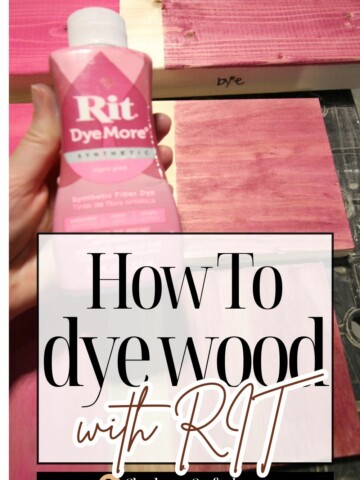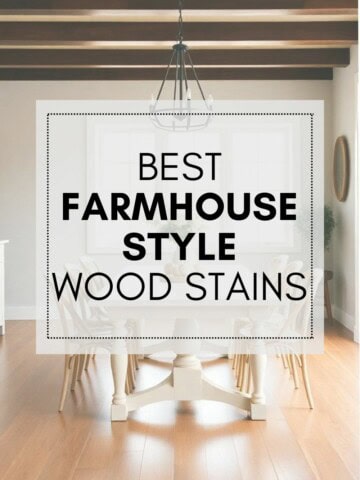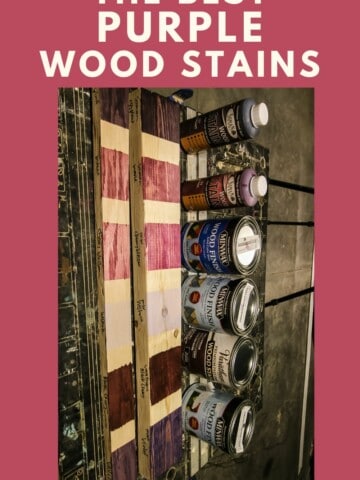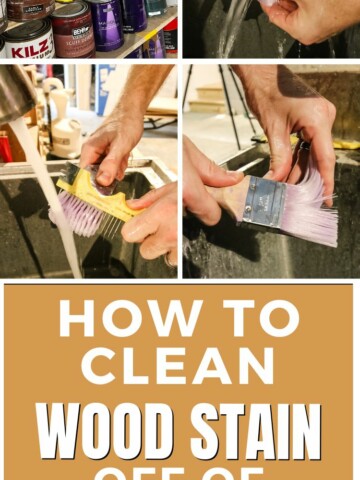Looking for the perfect food-safe wood stains? Here are my favorite tried and true options AND some DIY solutions to try today!
When you are working on a wood project of any kind, choosing the right wood stain or sealant can completely change how the end result looks.
When you are working on something that is going to come in contact with food, like a cutting board or countertop, it is important to choose a food safe would finish.
This is the safest option when your wood surface is going to come in contact with food.
Today I wanted to compare and contrast some of the most popular food safe would finish products, including food safe wood stains, food safe wood oils, and DIY food safe wood finish options.
Let's compare them all to decide which would be the best option for your wood project!
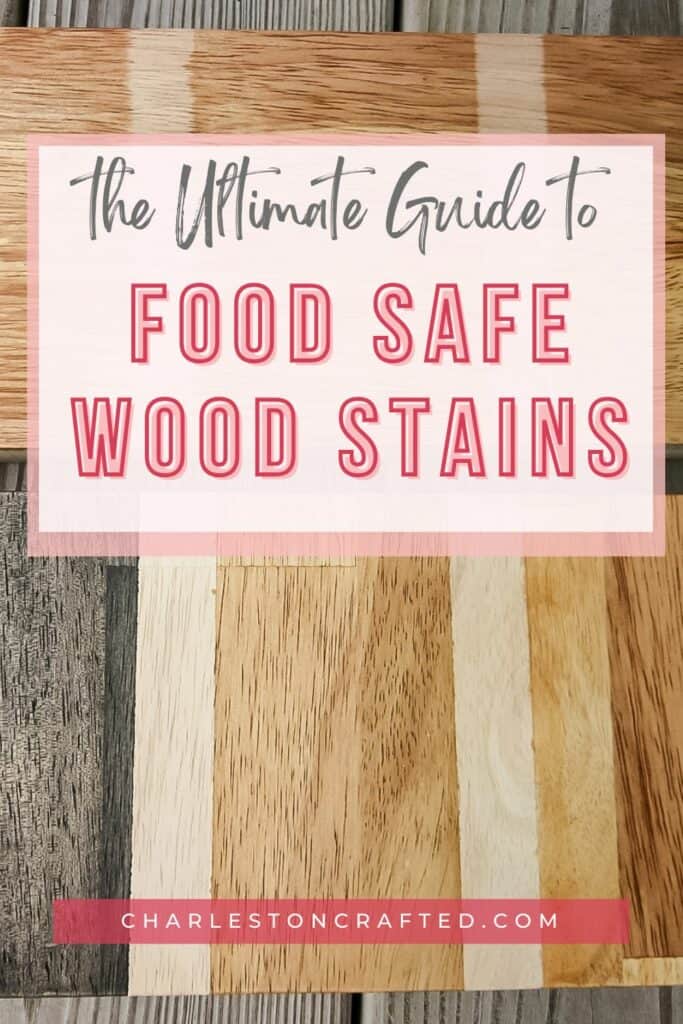
Tips for Choosing and Applying Food-Safe Wood Stains
When you're choosing a food, safe wood stain for your project, there are a few questions to ask yourself to help narrow down, which would finish will be perfect for your project.
One of the first and most important questions is, do you want to preserve and enhance the natural color of your wood or do you want to change the color of the wood?
If you want to change the color of your wood drastically, then you are going to want to apply a food safe would stain.
However, if you want to preserve your wood color, you have a lot of options for food safe wood finishes and oils.
The next question has to do with maintenance. Certain oils and finishes are going to require that. They be touched up or reapplied more frequently compared to others.
The final question has to do with overall use and waterproofing. Certain finishes are going to be a lot more durable and waterproof than others. Depending on the use of your surface, this could be an important factor.
Tips for applying wood finishes
Regardless of which of the following finishes you choose, here are some of my tips to get the best possible results.
- Always read the instructions on your can of wood, finish and follow them, particularly having to do with number of coats, sanding between coats, and dry and cure time.
- Lightly sanding your wood surface with 220 grit fine sandpaper will help the finish adhere and absorb better than into just raw wood.
- Whichever finish you choose, always apply it in the direction of the wood grain. This is the best way to get natural results.
- Always wipe off any excess oil or finish pooling on top of the wood surface after about 10 minutes. If you let it sit there, it could lead to rings and stains.
- Always ensure you have proper ventilation and follow safety procedures during the staining process. This means wearing gloves and wearing a face mask if necessary.
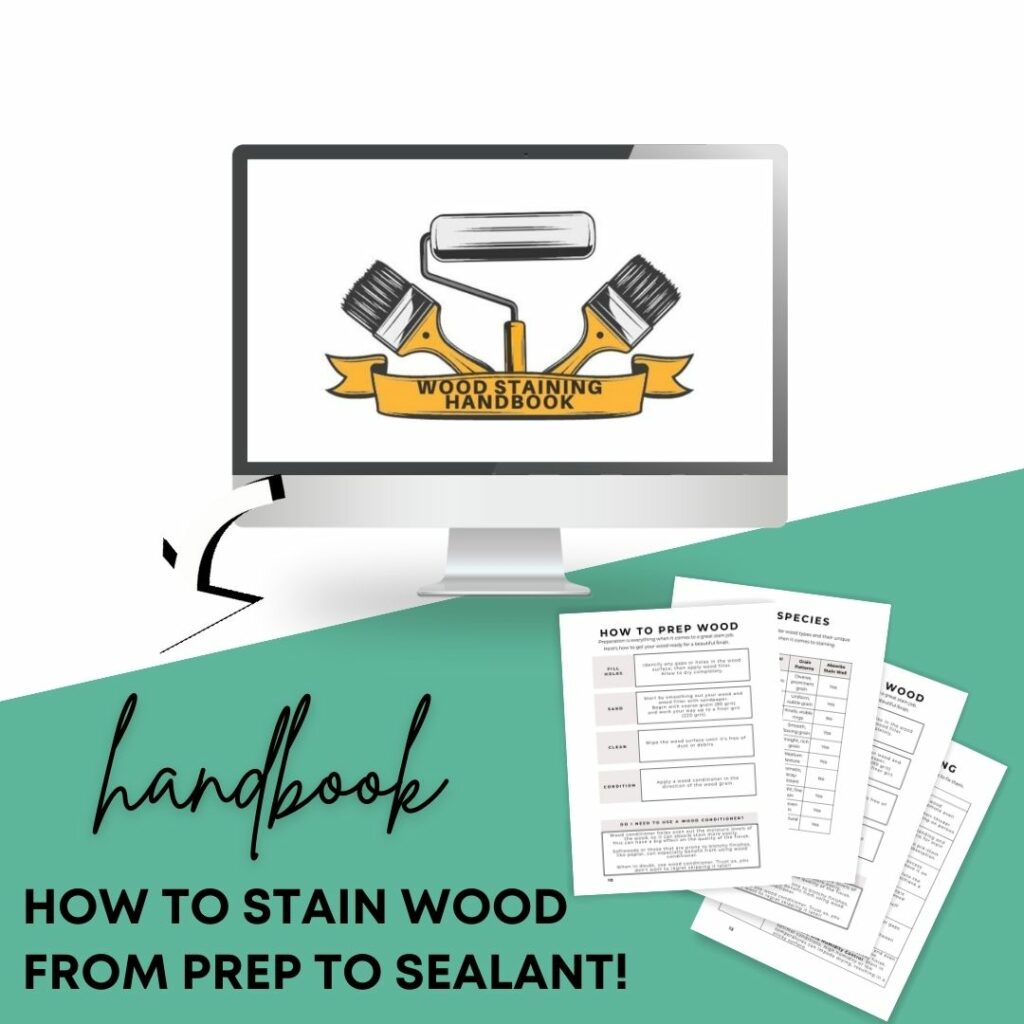
Food-Safe Oils for Wood
My favorite option as a food safe cutting board stain is not really a stain but an oil.
Usually, you're making cutting boards and similar food prep services out of beautiful wood. Don't cover it up – enhance it.
Food safe cutting board oils are a great option to add durability to your wood piece without hiding the beautiful natural wood.
| Wood Oil | Food-Safe | Waterproof | Color | Sheen | Reapplication Frequency | Link to Buy |
|---|---|---|---|---|---|---|
| Linseed Oil | Yes | No | Light amber to brown | Satin | Every 6-12 months | Amazon |
| Mineral Oil | Yes | No | Colorless | Matte | As needed | Amazon |
| Walrus Oil | Yes | Yes | Golden amber | Satin | As needed | Amazon |
| Shellac | Yes | No | Amber | Gloss | As needed | Amazon |
| Tung Oil | Yes | Yes | Amber to dark brown | Satin | Every 1-3 years | Amazon |
The food-safe wood oils that we have used include:
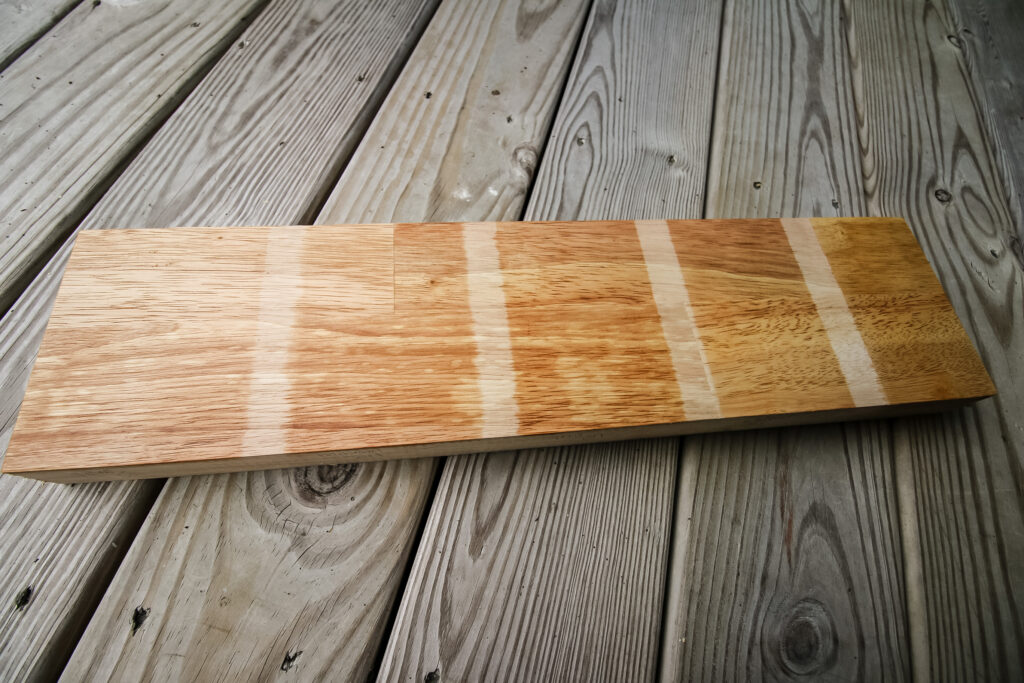
Linseed oil
Linseed Oil is extracted from the seed of the flax plant. It has been used for centuries to treat and protect wood.
Linseed oil is a popular natural wood finish that provides protection to the wood surface, as well as giving it a warm, rich appearance.
Linseed oil naturally repels water but is not waterproof. It dries to a hard finish when fully cured.
Read our complete guide on how to use Linseed Oil
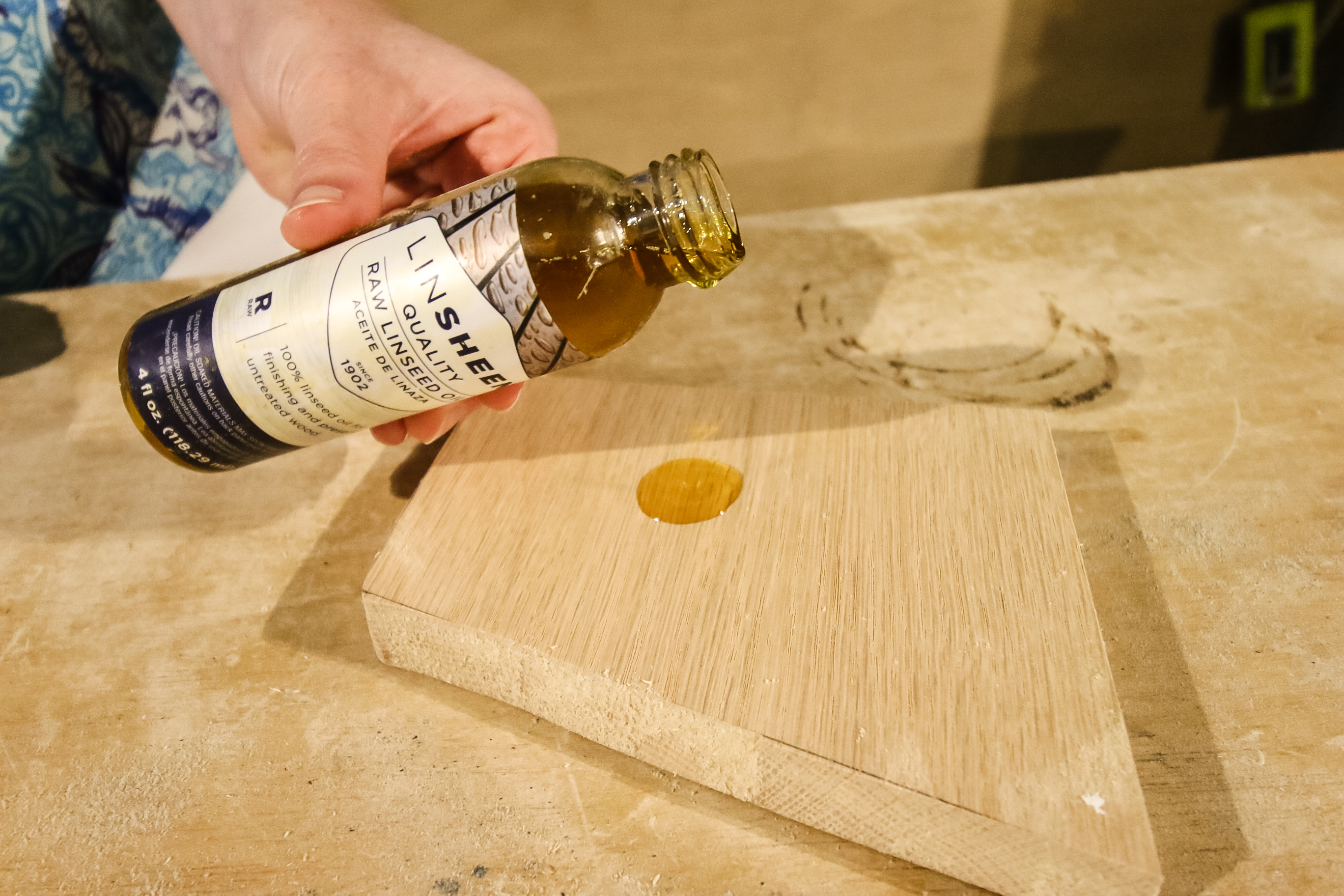
Mineral Oil
Mineral Oil is derived from petroleum, but fully purified mineral oil is often used as a food-safe wood finish.
It is popular because it can withstand high heat, is water resistant (not water proof), is non-toxic, and is easy to apply and maintain. It is odorless with a matte finish.
Read our complete guide on how to use Mineral Oil
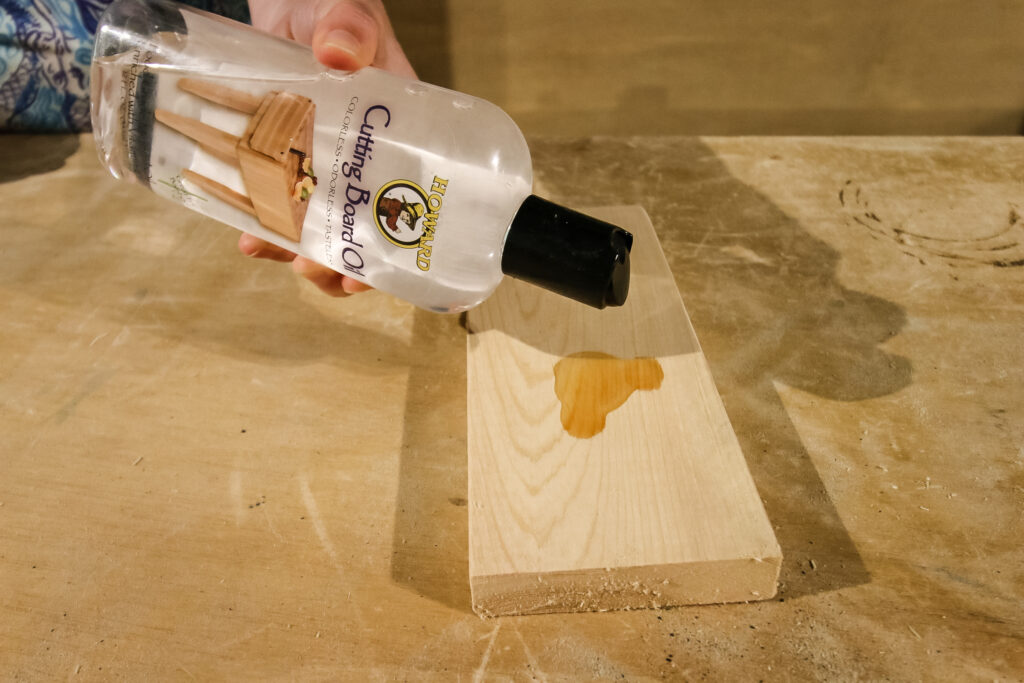
Walrus Oil
Walrus oil is made from Coconut Oil, Beeswax, Mineral Oil, Vitamin E. It is easy to apply and gives the wood a golden amber color and satin finish.
It is a waterproof finish and is usually our pick when we want to oil wood!
Read our complete guide on how to use Walrus Oil
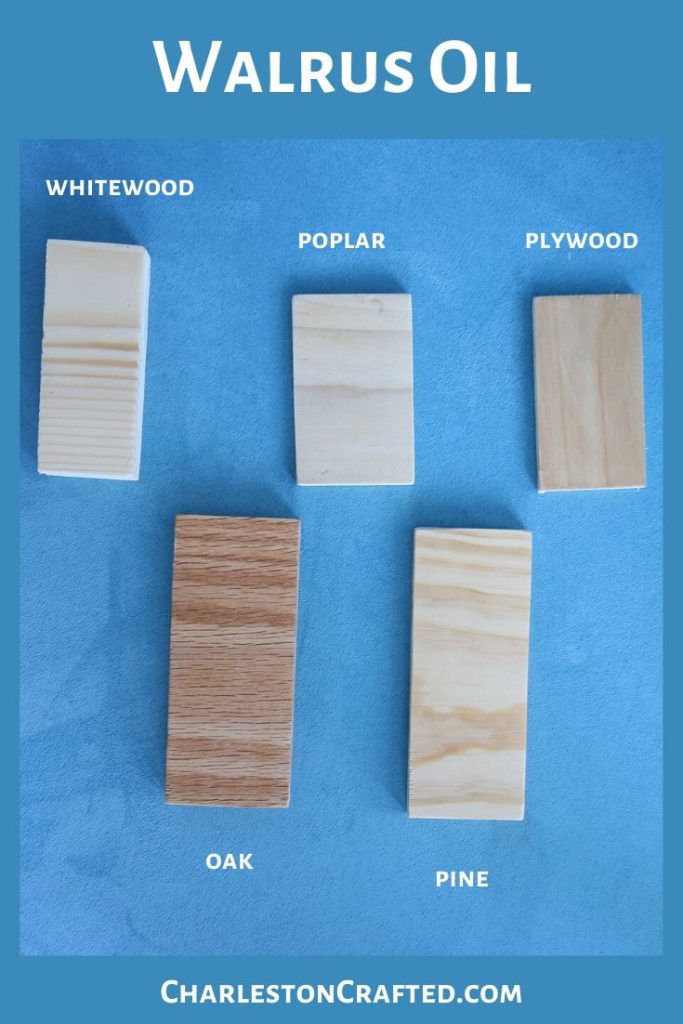
Shellac
Shellac comes in spray and wipe on options and, once cured, is another non-toxic wood finish option. It tends to have a glossier finish, but is very durable.
I actually love the spray can versions of shellac, especially for irregular shapes or things that would otherwise be difficult or time consuming to seal (like wooden kids toys!)
Read our complete guide on how to use Shellac
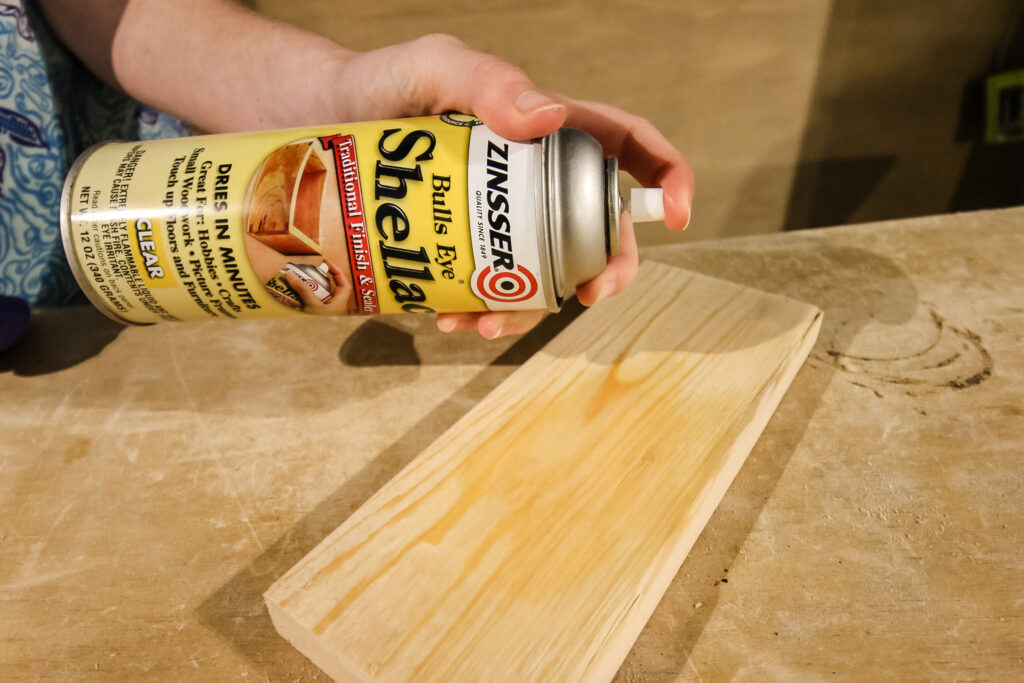
Tung Oil
Tung oil is an oil extracted from seeds of the tung tree. It is a drying oil, meaning that it dries as a hard, dry surface coat.
Pure Tung Oil does not yellow over time, dries quickly, is VOC-free, and works on finished, painted, and bare wood.
Read our complete guide on how to use Tung Oil
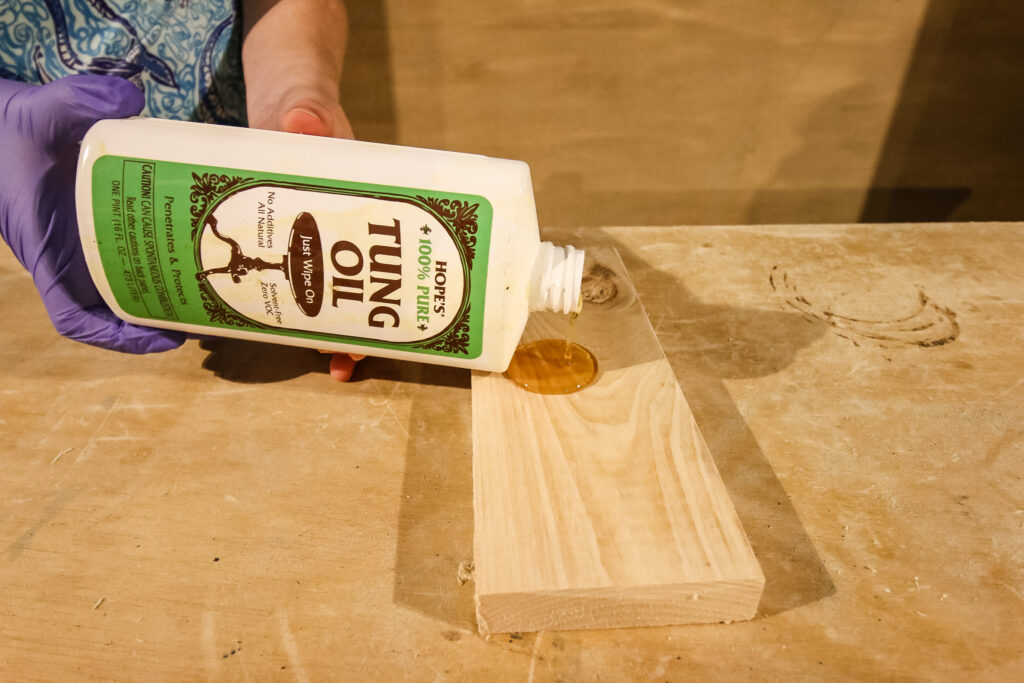
The Best Food-Safe Wood Stains
If you want to actually change the color of your wood surface, then you are going to need a food safe wood stain color.
There are not a ton of wood stains that call themselves food safe. I found the two most popular brands on the market and tested them out.
Watco Butcher Block Oil and Stain (in Hazelnut and Ebony)
The only food safe with stain that I could find at my local Lowe's was by Watco brand. This is their butcher block oil and stain in one.
I grabbed both the Hazelnut and Ebony colors which were the only colors available at my Lowe's.
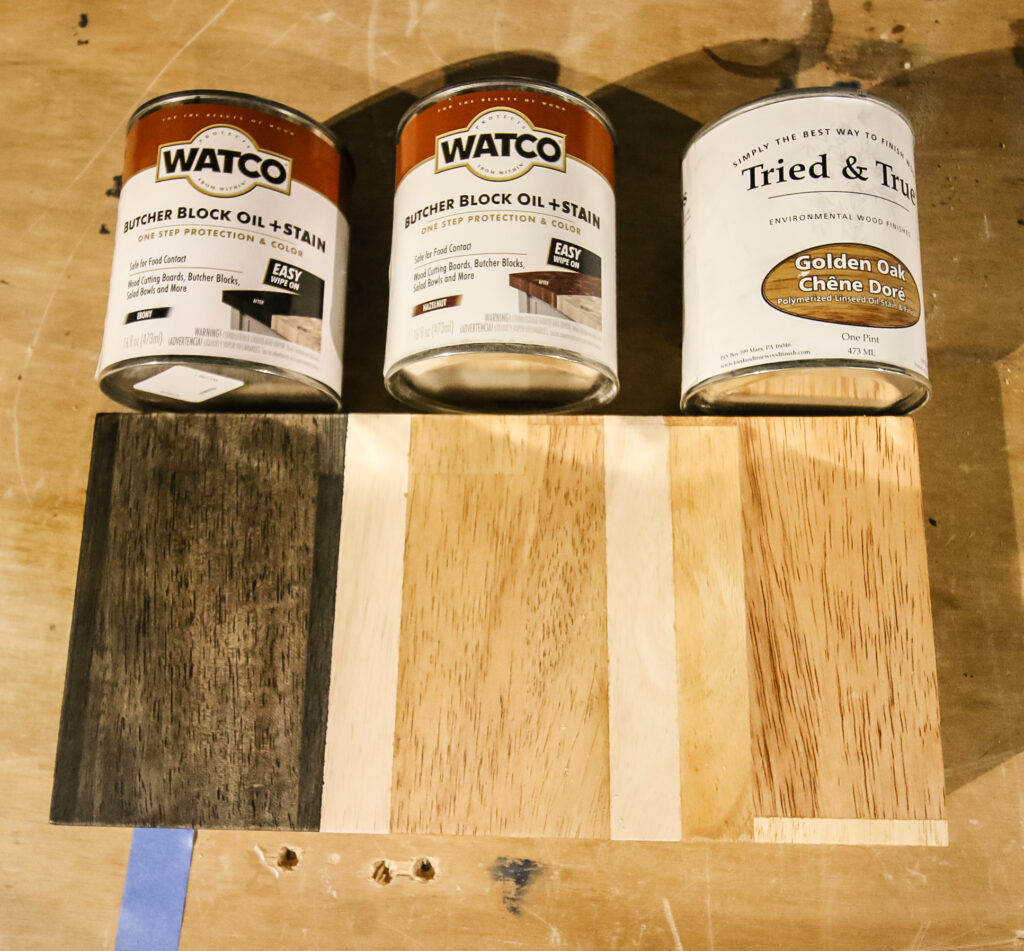
This product is applied like a normal wood stain. We like to apply them with a lint free cloth in the direction of the wood grain.
I will say that, especially with the Ebony color, you really want to go ahead and wipe off any excess immediately. Let it sit for about five minutes, which is what I normally do with wood stains and I had to really muscle to get some of the excess blobs off of there.
I'm not sure if it was quick drying or what happened but definitely wipe off access as you apply especially with the darker colors.
Speaking of colors, I think of these were really poorly named. To me, hazelnut should be a pretty dark brown, and Ebony should be almost black.
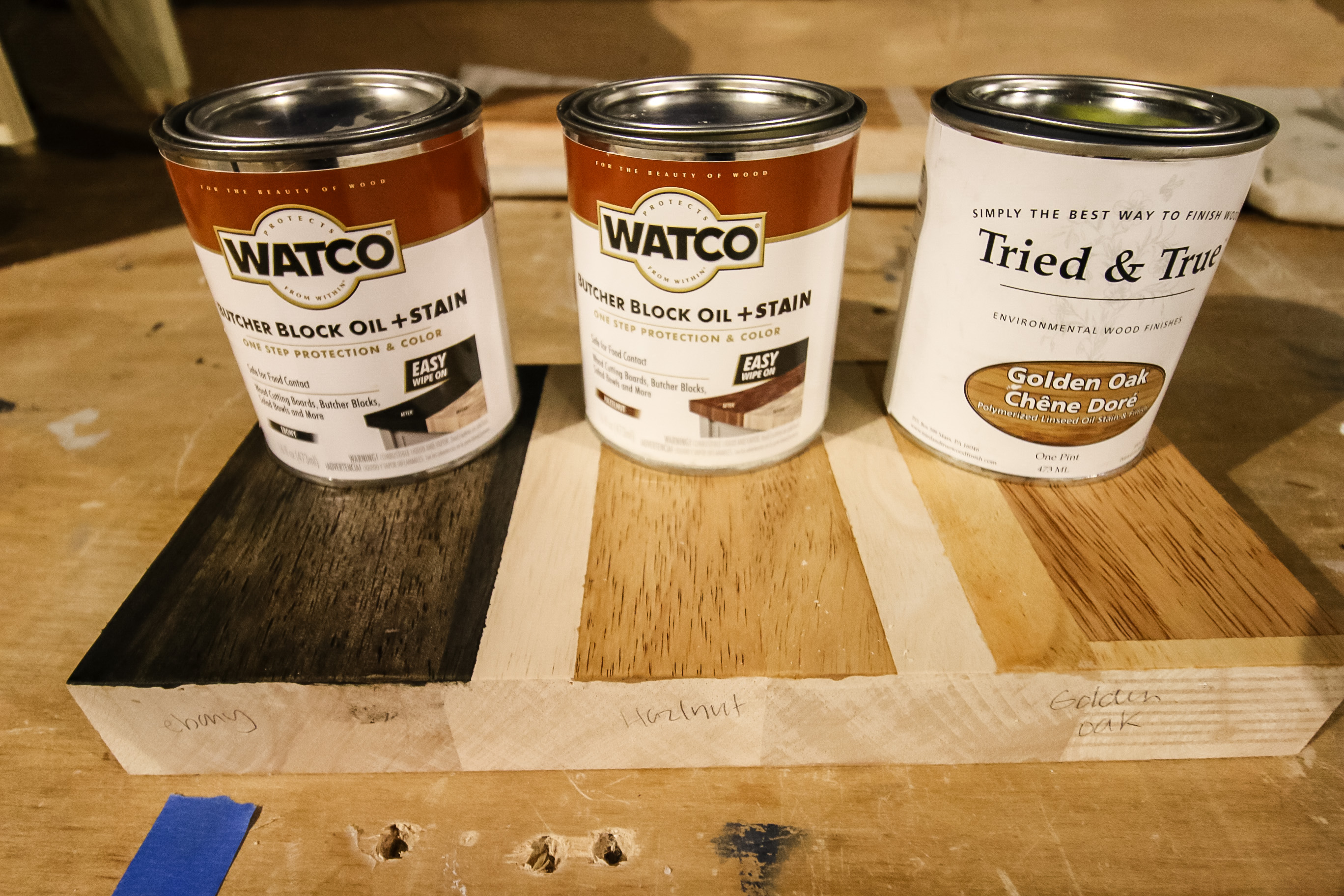
Instead, when I applied these to butcher block, which is the intended use, hazelnut turned more of what I would consider a golden oak, and Ebony was closer to walnut.
That being said, these both applied very nicely, and gave the butcher block a really, pretty color. They both definitely darkened the butcher block more than just applying in oil.
They have an ever so slight sheen to the finish.
I do love that this is a one step option so you don't need to apply topcoat or anything this is it.
Overall, I really think that the Watco food safe stain in one is a good option if you want a food safe wood stain.
Just be sure to swatch them on your actual wood in advance to make sure that you like the color before committing.
Tried & True Stain + Finish (in Golden Oak)
The second option of food, safe butcher block stain colors that I tested was by tried + true brand. I chose the golden oak color.
They offer five different colors, but honestly at over $30 a pint, since I wasn't working on a real project and just testing stains here, I only wanted to buy one.
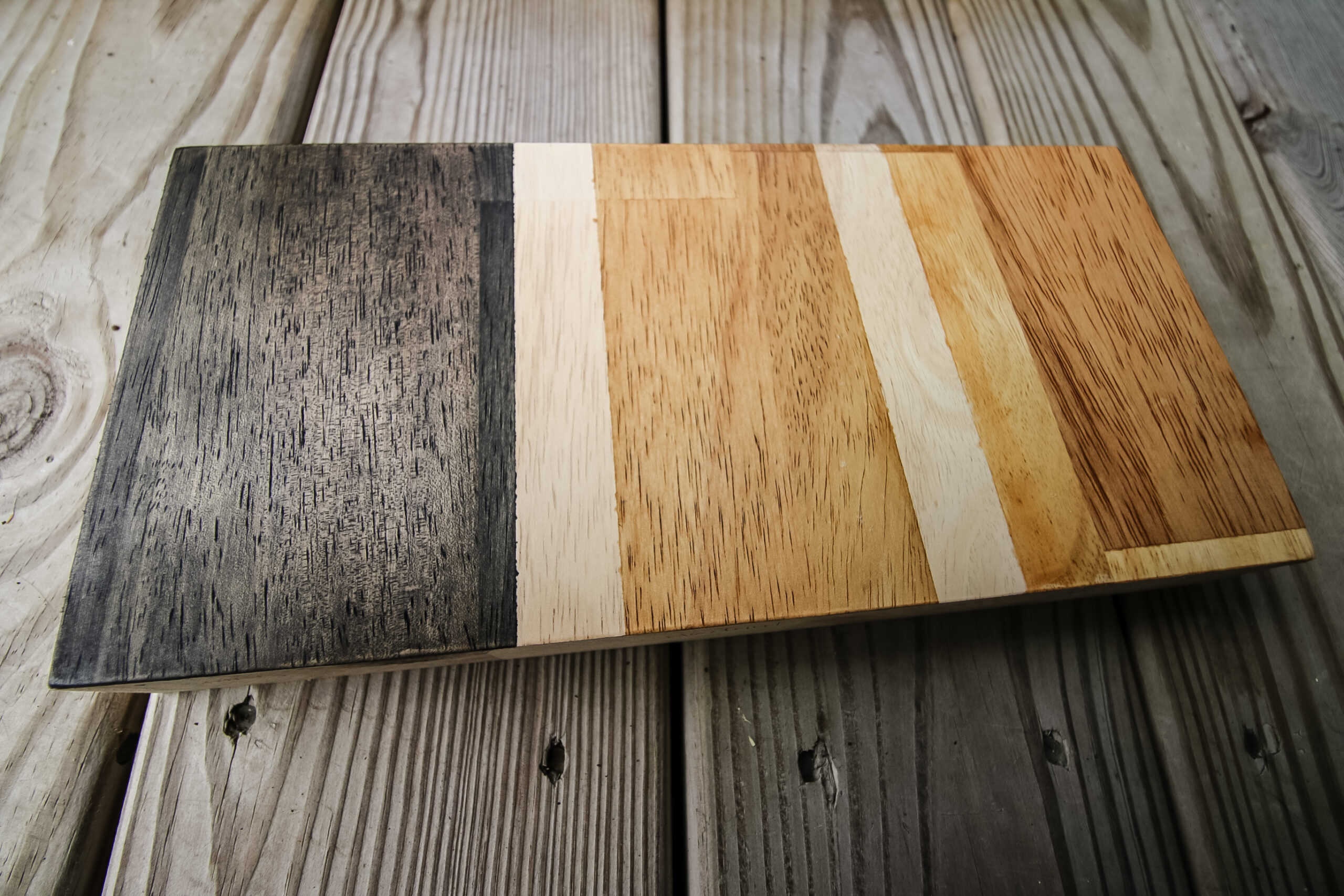
The colors offered are:
This stain applied like a normal stain as well, and added a rich golden color to the wood. I definitely think that the color was true to it's Golden Oak name.
It is also worth noting that this finish was much more matte than the Watco version - there is essentially zero sheen to it.
I also think that the finish is slightly smoother to the touch, even without any sanding after the oil dried.
Because of the matte finish and smoother look, this is going to be my pick for favorite food safe stain for wood. But, both brands are very, very similar and I don't think you can go wrong with either.
DIY Food-Safe Wood Stains
Your final option for a food safe finish for wood projects is to make your own DIY wood stain using every day household items.
there are a few benefits to making your own homemade wood stain. One is that you know that it is safe for food and there's no question of the contents if you made it completely from scratch.
The other is that it can be super cheap or even free if you already have everything you need on hand.
Finally, if you were just a creative person or a maker, it could be really fun to make things like wood stain from scratch.
I didn't test this on butcher block, but these are all homemade food, safe wood stains that I have made in the past.
Vinegar Stain
You can use different vinegars to stain wood. Since vinegar is edible, it's a totally food safe option. This is definitely something you want to experiment with before committing to!
Here's our complete tutorial on how to stain wood with vinegar.
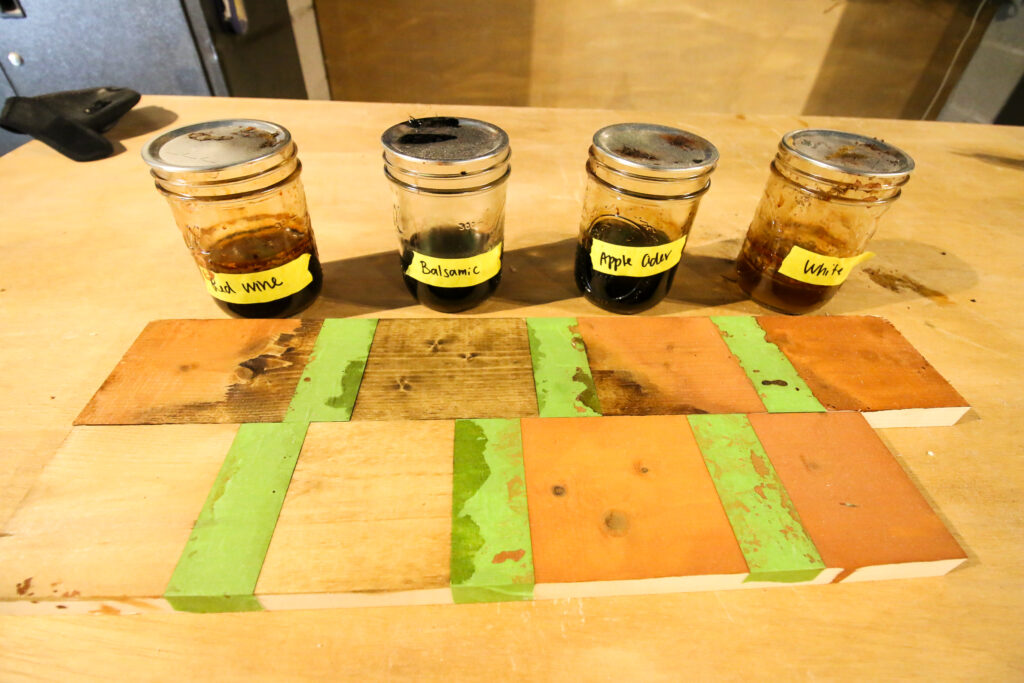
Coffee Stain
Coffee can be used to stain wood. You can experiment with different strengths and amounts of time to let it sit to adjust the color depth.
Here's our complete tutorial on how to stain wood with coffee.
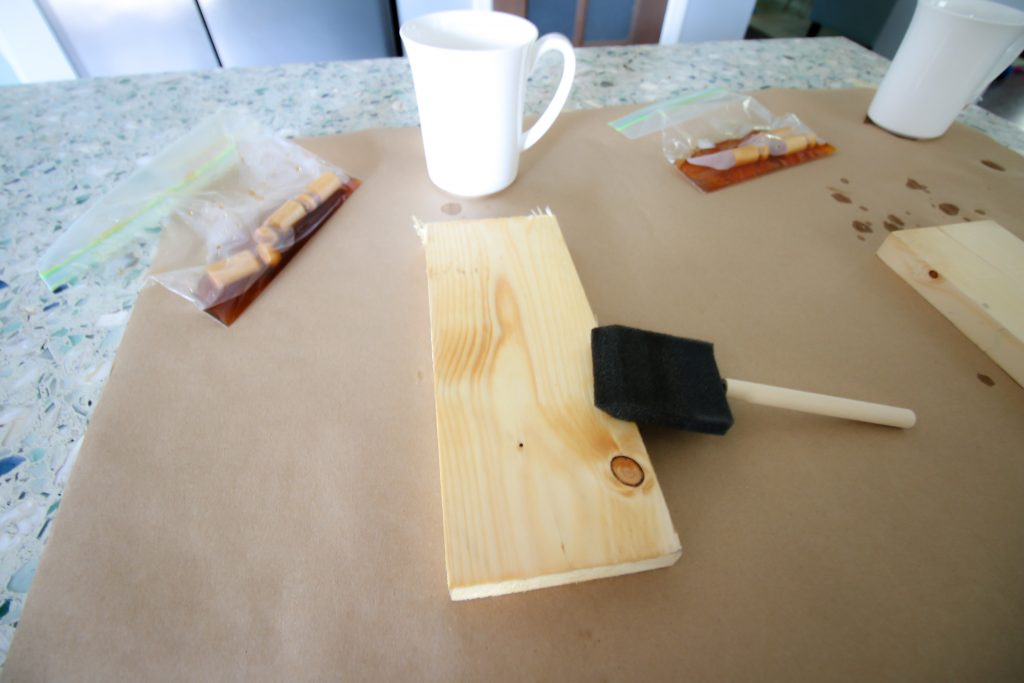
Tea Stain
You can use black tea to stain wood. It is a subtle color - but it's 100% edible and food grade.
Here's our complete tutorial on how to stain wood with tea.
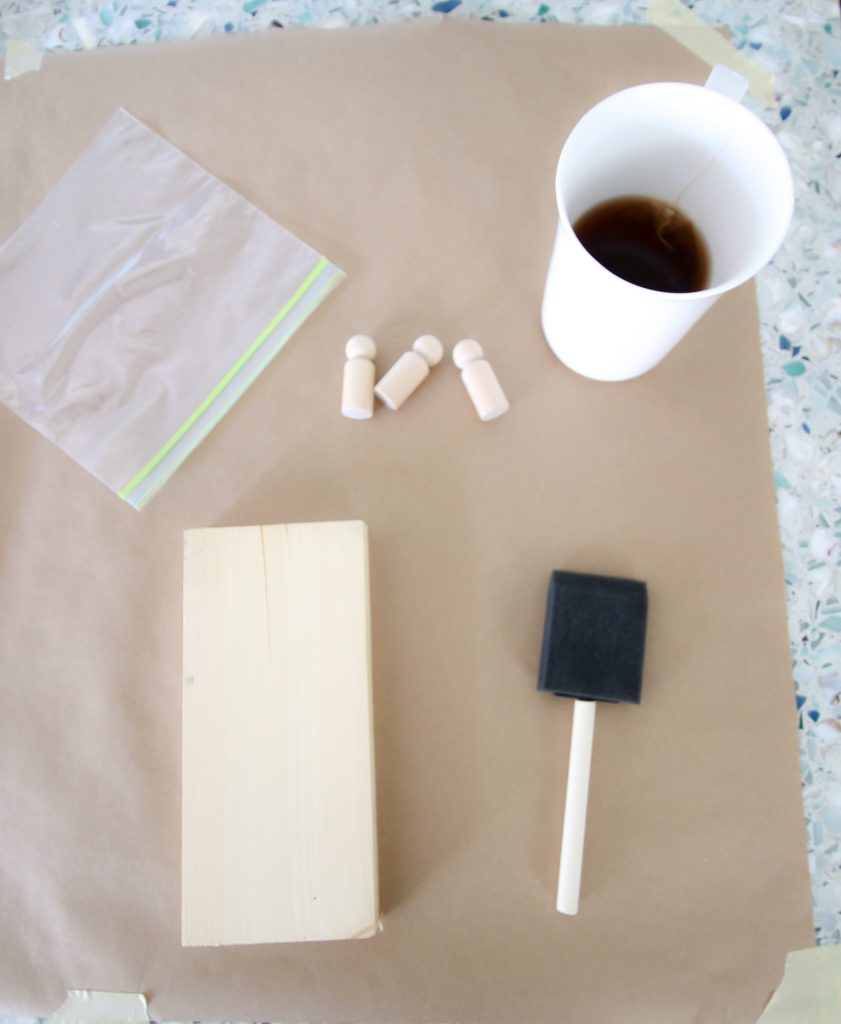
Food Coloring Stain
You can use food coloring to create vibrant and non-toxic food safe wood dye. The biggest benefit of using food coloring is the bright colors that are possible!
I have used food coloring (mixed with vinegar + water) to dye wooden kids toys. You really can get vibrant colors!
Here's our complete tutorial on how to stain wood with food coloring.
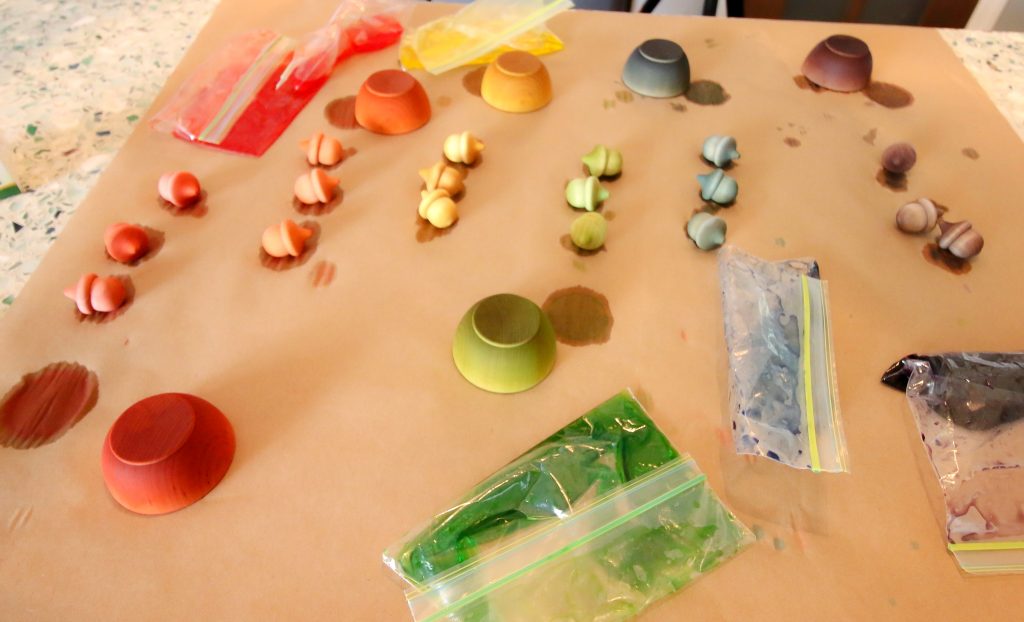
Any more questions about the best food safe stains for cutting boards, butcher block, and other wood surfaces?
Looking for something?
We've been doing this since 2012 so we have a LOT of blog posts!
Search stuff like: Ceiling Projects | DIY Plant Stands | Thrift Flips


Hello, I'm Morgan, half of the creative force behind CharlestonCrafted.com! With a passion for DIY that dates back to 2012, I've transformed three homes and now I'm dedicated to helping others craft their dream spaces. Let's turn your house into a home together!


